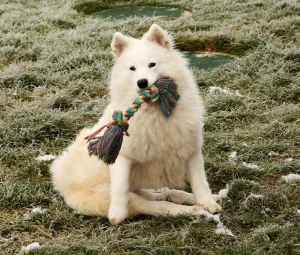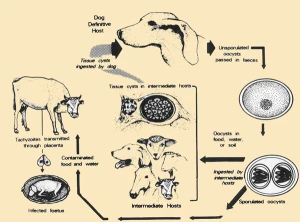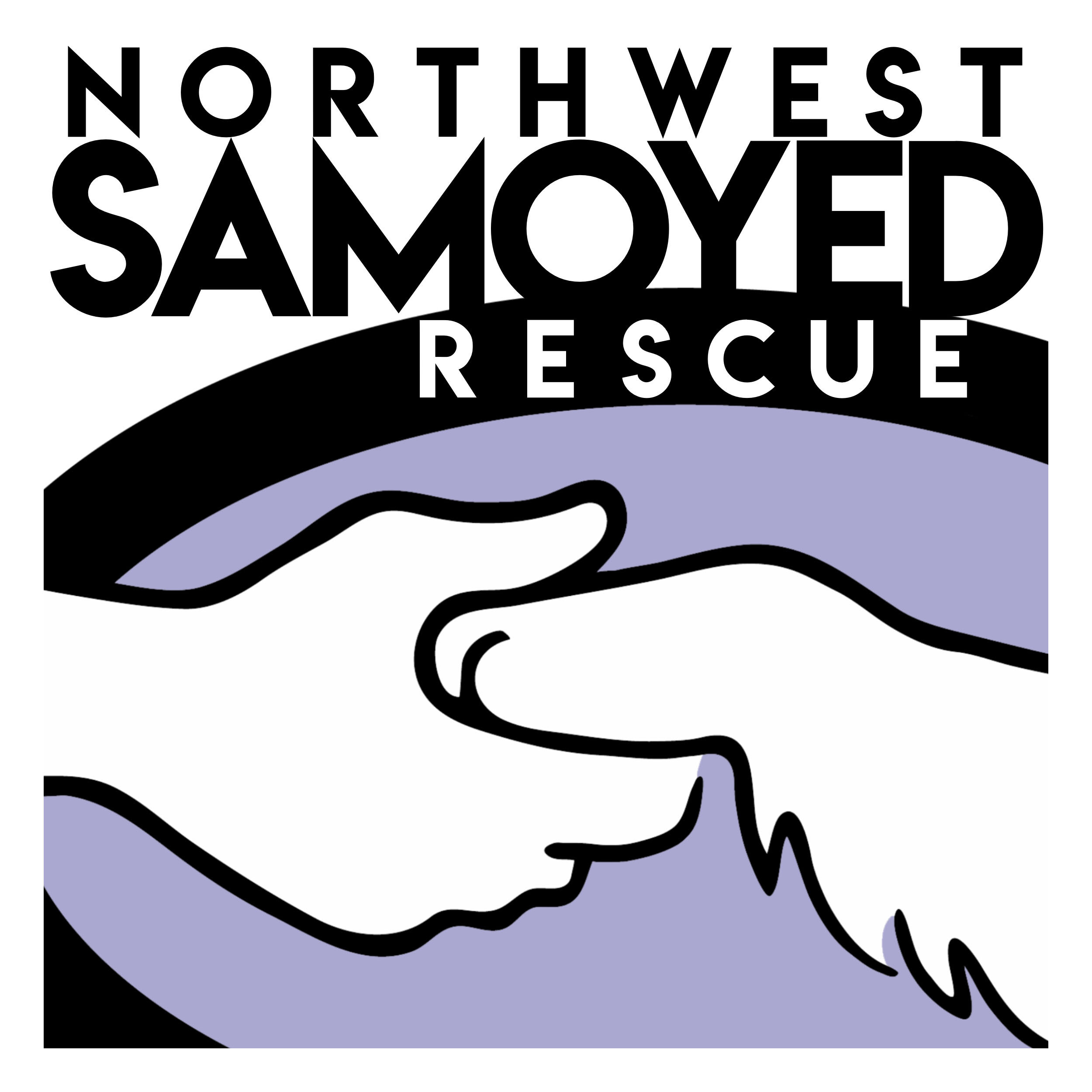February 2013 (Special Report: Neospora Caninum)
In August last year the authorities in Delaware and Pennsylvania cooperated on the raid of a property that straddled the state line. Forty four Samoyeds were seized and taken to the SPCAs in each state, and after a court case resulted in a guilty plea to animal abuse the dogs were released to MidAtlantic Samoyed Rescue in late October. One of the dogs was known as Delaware-14, and MASR was told her rear was paralyzed.
When they got her they found an eager young girl who was deformed but could get around quite well. All the dogs were vetted, cleaned up and prepared for adoption.

When we first saw DE-14 we asked if we could adopt her. Our home was built for accessibility and we felt it would be good place for her, and MASR agreed to place her with us. She was flown from DC to Seattle in mid-November. We named her Sasha.
Because we also do rescue they allowed us to spay her after she arrived, and our rescue vet did that. She was treated for a persistent urinary tract infection and x-rayed to look at structure. The pictures showed she has no hip sockets, and the top of the rear leg bones are floating in muscle. The vet said it was a birth defect.
We disagreed with the treatment for her UTI and took her to a different vet, where she was treated with two different antibiotics. After her third visit we were in the waiting room when the clinic owner walked by, looked at Sasha, and said he knew what caused the deformity. He was at least the seventh vet to have seen her and the first to recognize what happened. He is an orthopedic specialist and had seen a prior case. He believed Sasha’s mother had a parasite when she was pregnant.
The parasite is called Neospora Caninum, and is more technically an intercellular protozoan. A pregnant dog with it can transmit it through the placenta to a fetus, and although some puppies are not affected, those that are look like Sasha. It can also be fatal to puppies.
Neospora Caninum is an infectious disease requiring two hosts; the primary is the dog (less often wolves and coyotes) and the secondary is cattle (also goats and sheep). It is spread by contamination of cattle feed by dog feces; transfer between cattle is congenital, through the placenta to the fetus, and can cause spontaneous abortion. Calves can be born without symptoms but still carry the parasite and pass it along to their offspring. It returns to the dog when it consumes meat from an affected animal.

This parasite was first identified in the mid-1980’s in Norway, when cases previously diagnosed as toxoplasmosis were found to come from it. It is now a major cause of spontaneous abortion in cattle worldwide and has been found many places, but is a particular problem in the U.S., Netherlands, and New Zealand. Because there is still a lack of knowledge there is no recommended regimen to protect from it. Infected cattle should immediately be removed from the herd and dogs should not be allowed near cattle feed. It is not infectious to humans.
Testing can be done to find whether a dog has Neospora Caninum. The first is the ELISA test (enzyme-linked immunosorbent assay) which should determine if antibodies are present (the cost on that test should be in the range of $25-$35). If they are, a more expensive specific test can be done which shows if this exact parasite is present. Sasha has been tested, as well as several other dogs from the Delaware seizure, and all dogs so far are negative. [ed. note: As of April 2013, at least 4 are positive] It was important for rescue to make these tests because of the risk to other dogs if any of them still carried the parasite. At this point it looks unlikely that is the case, but if any dog displays rear end weakness it should be tested for this parasite. There is nothing that can be done for Sasha because her rear and back leg problems are permanent, but nothing much bothers her and she is fairly mobile and very happy. For more pictures of Sasha go to http://nwsams.smugmug.com/family/sasha
This information was compiled from information from our veterinarian, from the USDA website, and from various sources on the net. Illustration from USDA. For more about Neospora Caninum you should consult with your own veterinarian.
